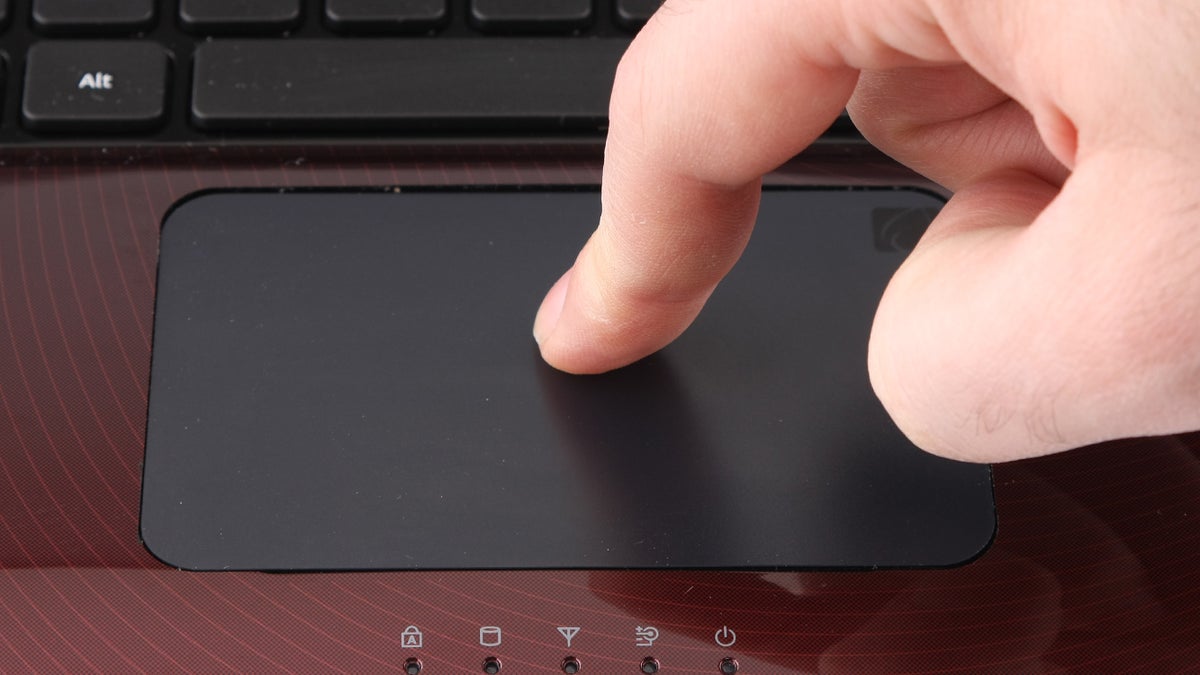Touch pad of the future: Hands-on with Synaptics' ClickPad Series 3.0
Can laptops catch up to the multitouch capabilities of tablets and smartphones? Synaptics' new ClickPad will try.

For all the advancements laptops have made, the humble touch pad has been essentially running the same hardware and software for years.
When you get right down to it, laptops only consist of a few key parts as far as user interface is concerned. Keyboard, screen, speakers--and, of course, the touch pad. With multitouch tablets and smartphones changing the interface landscape drastically, it's quickly becoming a multitouch world, and computers are the devices playing catch-up. Synaptics, makers of most multitouch touch pads used today, have a next-generation clickpad in development that hopes to close the gap quickly. Called the Series 3.0 Clickpad, it's a wider, button-free click surface that's the successor to clickpads seen in some current Windows laptops. We tried a prototype concept sent to us by Synaptics, installed on a Samsung R480, to see how it changed the Windows experience. And the answer, for the most part, is that it approaches what's already available on any
When it's all boiled down, the ClickPad Series 3.0 offers several significant improvements:
More accurate finger recognition. The 3.0 Clickpad has 10-finger independent recognition on its capacitive surface, something more akin to what devices like the iPad have. Synaptics' image-sensing technology on the touch pad also is far more accurate at locating the shape of the finger being used, and whether it's a flat surface or something resembling a palm. This allows an override of the touch technology when a palm is accidentally placed on the surface when typing.
Multifinger gestures. Apple's clickpad has had this for years, but the new Clickpad allows up to four-finger gestures and a wide variety of gestures to clear the desktop, browse back and forth between Web pages, and more accurately pinch-to-zoom and rotate. Four-finger swiping brings up a clever "deck" of open windows, which can be easily navigated between.
Chiral scrolling, edge scrolling. Other new features added attempt to make scrolling easier; one, "chiral scrolling," lets you draw your finger in a spiral to scroll up and down pages. Edge scrolling keeps moving whatever object you're dragging, even when you've hit the edge of the screen. These are useful wrinkles, but not utterly essential ones.
Clicking anywhere. Current clickpads work like a giant lever, angling downwards from a hinge on the back. Apple's clickpads don't click well at the back end, and neither do equivalent Windows clickpads. Synaptics' next-gen model is a large surface that can click down at any part of the pad. Sometimes the concept model felt a little loose, but in future pads it'll be nice to engage in some top-clicking.
Scrybe. Synaptics is working on a gesture-based vocabulary for other clickpad-initiated controls. Some may involve drawing a question mark to begin a search, for instance. We welcome more features, but a gesture vocabulary will need cross-application support and could get confusing to master. We're reminded of Graffiti for the Palm Pilot; hopefully, it won't be as confusing.
Does ClickPad Series 3.0 reinvent the wheel? No, of course not, but it is a nice evolution, and it looks to be the ultimate version of the button-free clickpad. It also lets those used to "old-fashioned" button touch pads to use the new-gen Clickpads the same way, gesturing with one finger and clicking on the bottom with another. That's a clever way to welcome old and new users alike.
We'll keep an eye on laptops that may feature Synaptics' ClickPad Series 3.0, perhaps as soon as CES 2011.

